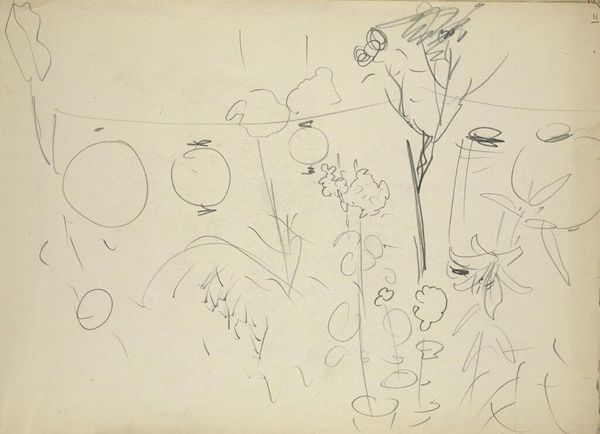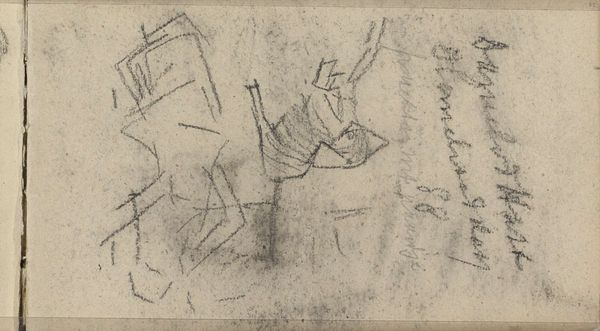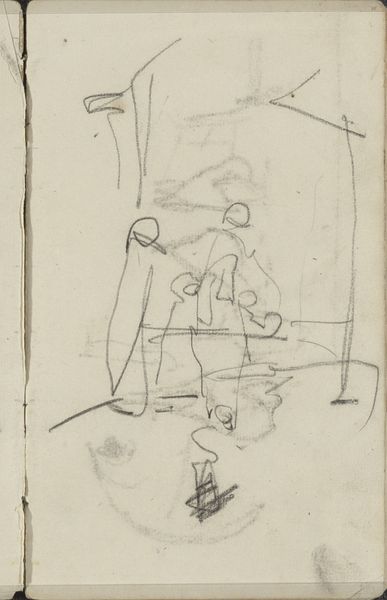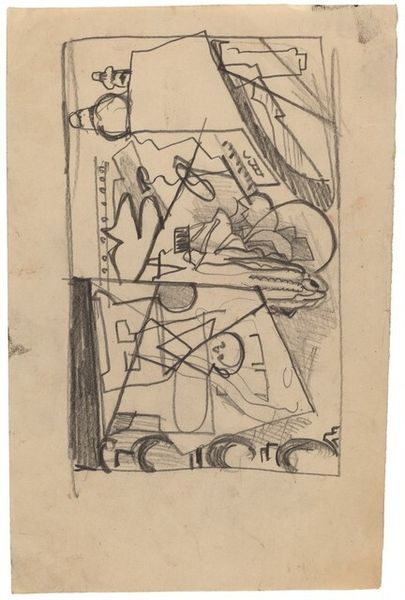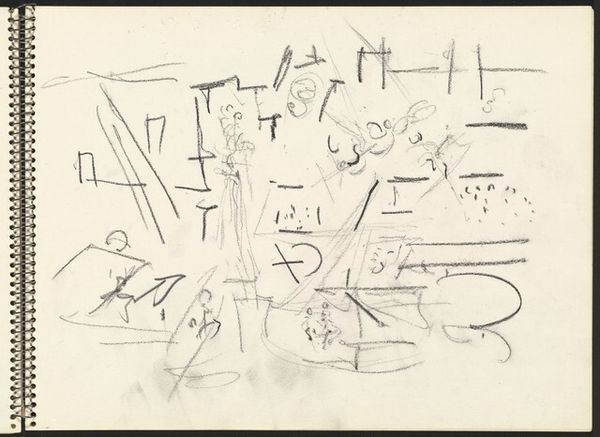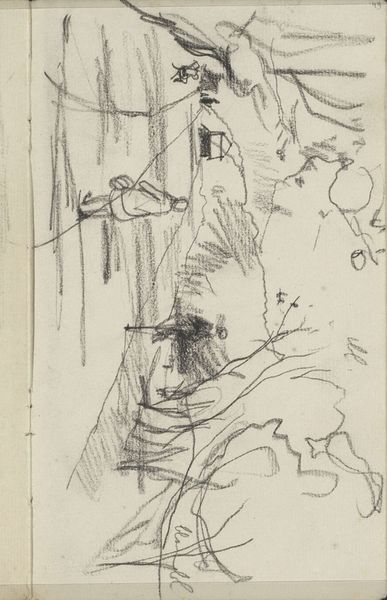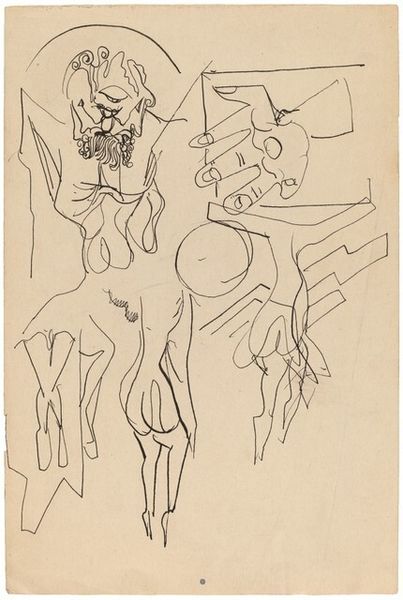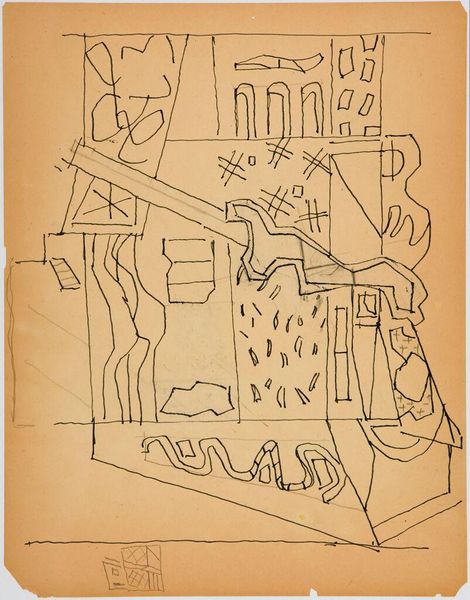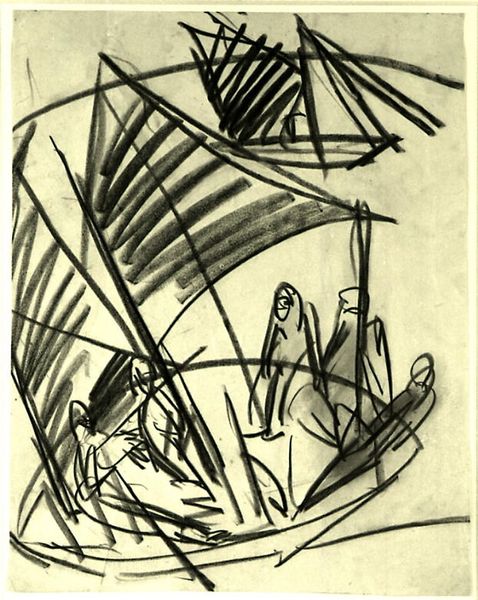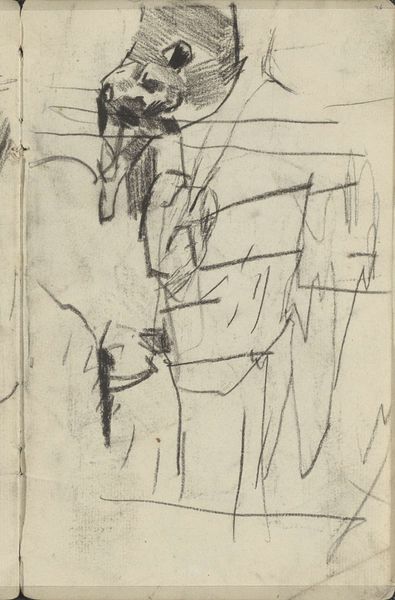
drawing, print, etching
#
abstract-expressionism
#
drawing
# print
#
etching
#
form
#
abstraction
#
line
#
cityscape
Dimensions: plate: 9.84 × 7.3 cm (3 7/8 × 2 7/8 in.) sheet: 13.02 × 9.84 cm (5 1/8 × 3 7/8 in.)
Copyright: National Gallery of Art: CC0 1.0
Curator: Looking at this etching, titled "Street with Bicycle" from 1951, Jacob Kainen presents a compelling abstraction of urban life. The cityscape is not directly represented but rather implied through fragmented forms and linear structures. What is your initial response? Editor: Immediately, I am struck by the work’s handmade quality. It’s not a slick, mass-produced image, but something wrought from direct engagement with the metal plate. You can see the artist’s hand in every etched line, suggestive of labor and process. Curator: Precisely. Notice how Kainen uses line, a primary element, to construct space and suggest objects. The bicycle, for example, is evoked with a few carefully placed marks, becoming a symbol rather than a literal depiction. Editor: It speaks to a larger tradition of printmaking as a democratic art form, a medium through which artists like Kainen could disseminate their visions more widely. This piece probably existed in an edition of multiples allowing it to reach far and wide. What would have a work like this meant for ordinary people coming into contact with avant-garde visions? Curator: Consider the overall composition and the interplay of positive and negative space, as this reveals much about the artist's intent. The abstract rendering nudges us to perceive beyond surface reality, to discern underlying structure and the geometry of form itself. Editor: The rawness of the etching process is impossible to overlook. Each line would have been bitten into the metal with acid, each plate meticulously prepped with ink and run through a printing press. I find a kind of beauty in that intense physical labor; Kainen’s work bridges what were typically considered two distinct spaces in the 50s: high art and artisanal making. Curator: So, in conclusion, while Kainen provides representational cues like "street" and "bicycle", he truly emphasizes an essentialist distillation. His use of etching transforms those details into shape and meaning through its abstract expressionist language. Editor: Right. Thinking about what printmaking makes possible allows us to consider how artists can reflect social conditions as it transforms art to everyday objects, revealing layers of creation in its final form.
Comments
No comments
Be the first to comment and join the conversation on the ultimate creative platform.
